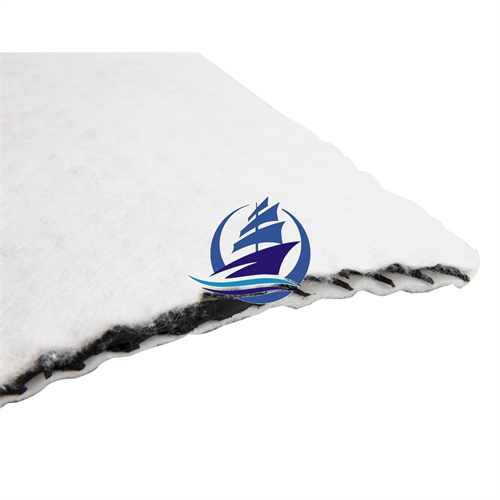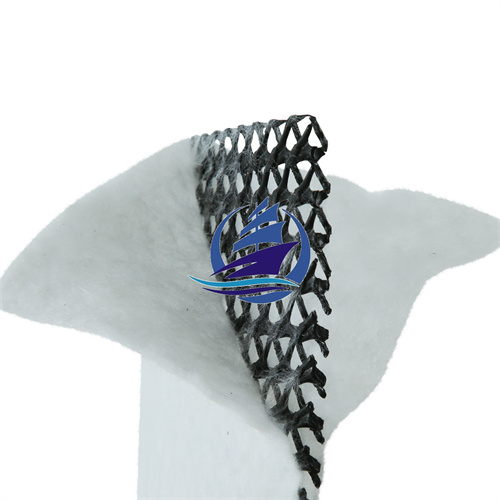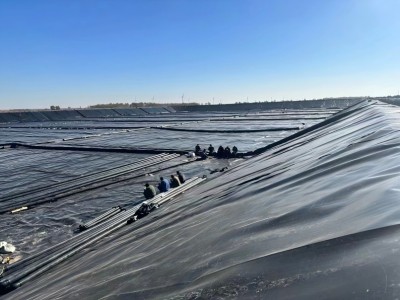
Enhance Drainage Efficiency with Geocomposite Solutions
2024-07-23 15:00
Enhance Drainage Efficiency with Geocomposite Solutions
Effective drainage is crucial for a multitude of projects, from residential landscapes to large-scale civil engineering undertakings. Traditional drainage methods often face challenges such as clogging, erosion, and limited capacity. Geocomposites, also known as geo composite materials, offer a modern and superior solution to these problems. By combining a geotextile layer with a drainage core, geocomposites provide exceptional performance and durability. Let's delve into the world of geocomposites and explore how they can revolutionize your drainage systems.
Types of Geocomposites
Geocomposites are engineered products comprising a geotextile and a drainage core. The geotextile serves as a filter, preventing soil particles from clogging the drainage system while allowing water to pass through freely. The drainage core, typically made of a polymer or plastic material, provides efficient water conveyance. There are primarily two types of geocomposites:
Vertical Drainage Geocomposites: These are designed for vertical drainage applications, such as retaining walls, tunnels, and landfills. They typically consist of a geotextile layer bonded to a corrugated plastic core.
Horizontal Drainage Geocomposites: Primarily used for horizontal drainage in applications like roads, railways, and airports, these geocomposites often have a flat or dimpled drainage core.

Applications of Geocomposites in Drainage
Geocomposites are versatile materials with a wide range of applications in the drainage industry. Some of the most common uses include:
Road Construction: Preventing water accumulation, improving load-bearing capacity, and extending road life.
Railways: Ensuring stable track beds, reducing maintenance costs, and enhancing drainage efficiency.
Landfills: Managing leachate, preventing gas emissions, and protecting the environment.
Retaining Walls: Preventing erosion, stabilizing slopes, and enhancing structural integrity.
Tunnels: Controlling groundwater infiltration, improving ventilation, and ensuring structural safety.
Roof Gardens: Managing rainwater runoff, protecting the waterproofing membrane, and creating a healthy growing environment.
Sports Fields: Enhancing drainage, improving playing conditions, and reducing maintenance.
Benefits of Using Geocomposites for Drainage
Geocomposites offer numerous advantages over traditional drainage methods:
High Drainage Capacity: Their unique structure allows for rapid water removal, preventing waterlogging and erosion.
Excellent Filter Properties: The geotextile layer effectively prevents soil particles from clogging the drainage system, ensuring long-term performance.
Durability: Geocomposites are resistant to degradation, chemicals, and extreme weather conditions, providing a long service life.
Cost-Effective: While the initial investment in geocomposite material might be slightly higher, geocomposites often result in long-term cost savings due to reduced maintenance and increased system lifespan.
Environmental Friendliness: Geocomposites are made from recycled materials and contribute to sustainable practices.
Easy Installation: These materials are relatively easy to install, saving time and labor costs.

Geocomposite Price and Factors Affecting Cost
The geocomposite price varies depending on several factors:
Type of geocomposite: Vertical or horizontal drainage
Dimensions and thickness
Material quality and durability
Quantity purchased
Market conditions
It's essential to compare prices from different suppliers and consider the overall cost-benefit analysis. While the initial investment in geocomposite material might be slightly higher, the long-term savings in maintenance and increased system lifespan often outweigh the initial cost.
Additional Considerations for Geocomposite Drainage Systems
While geocomposites offer exceptional performance, it's essential to consider several factors for optimal results:
Site-Specific Conditions: The choice of geocomposite depends on factors such as soil type, water volume, and loading conditions.
Design and Installation: Proper design and installation are crucial for the success of the drainage system. Consulting with experienced professionals is recommended.
Maintenance: Regular inspection and maintenance are necessary to ensure the long-term performance of the geocomposite system.
Conclusion:
Geocomposites have emerged as a game-changer in the drainage industry, offering numerous advantages over traditional methods. By understanding the different types of geocomposites and their diverse applications, you can make informed decisions to enhance drainage efficiency and protect your project.
To get a precise geocomposite price and explore suitable solutions for your specific needs, contact our experts today. We offer high-quality geocomposites and comprehensive installation services. Let us help you optimize your drainage system and achieve long-term benefits.








